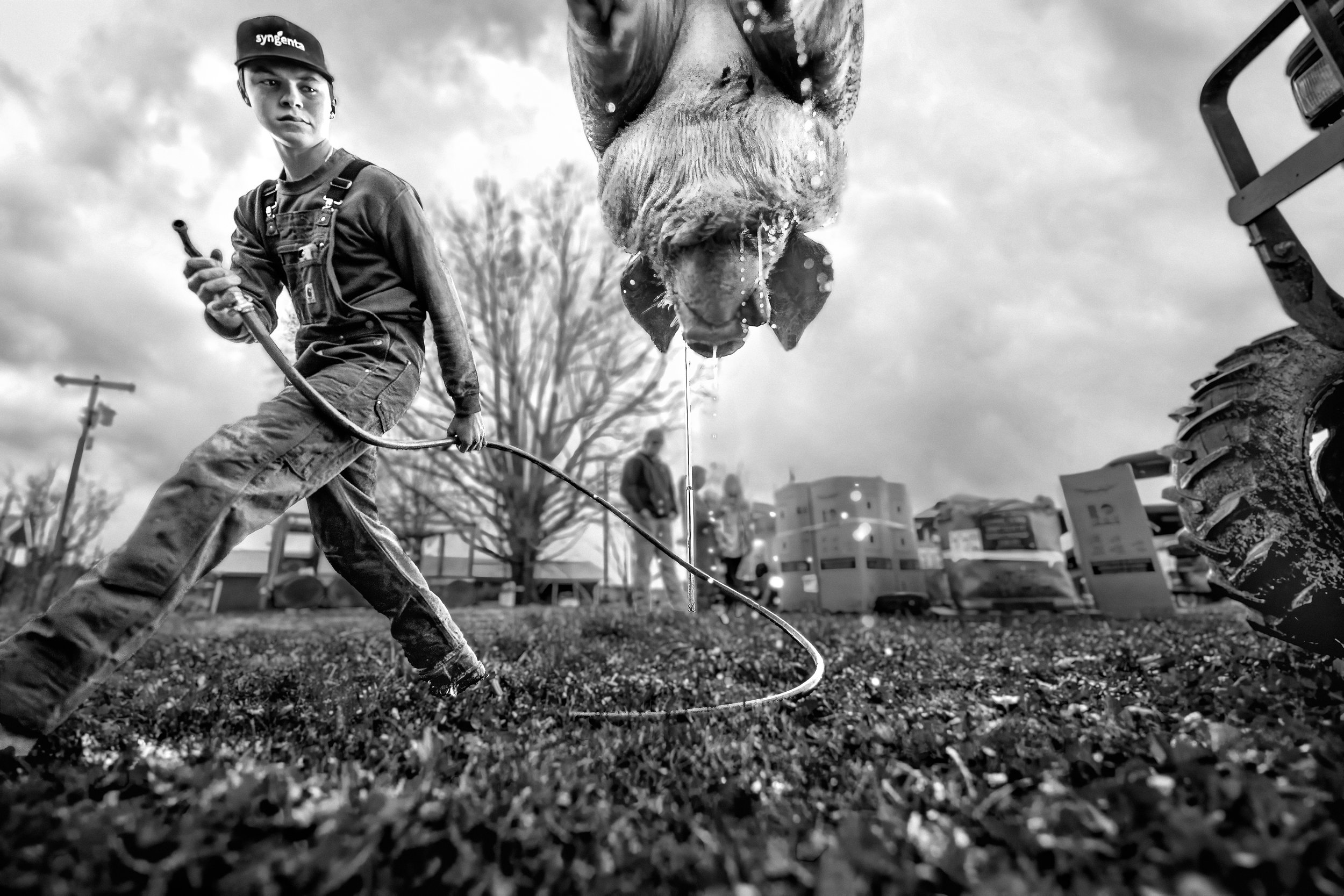
Blood & Soil: Life and Legacy on a Family Farm
Blood and Soil: Life and Legacy on a Family Farm
I began photographing the Trexler family’s hog killing over twenty years ago. At the time, I was a vegetarian—curious, cautious, and expecting to witness something harsh or unsettling. But what I found was something else entirely. Their annual gathering was not about violence, but reverence. It was methodical, precise, and filled with intention. I’ve returned over the years because I realized this wasn’t just a story about food—it was a story about care, tradition, and the quiet bonds that hold a family together.
My father introduced me to the Trexlers. He grew up on one of the many small family farms that shaped the town where I was raised. I spent much of my childhood on my grandparents’ farm—the same one he knew as a boy—running wild with cousins through fields, climbing silos, and fetching buttermilk from the barn. The sounds of water rushing through creeks, birdsong, and distant tractors still echo in my memory. While I didn’t witness hog killings in my youth, I knew the rhythms of a working farm and the pride of producing one’s own food. That world—where labor and joy coexisted—left its mark.
In many ways, this project has become a return to that landscape. What began as observation became relationship. Over time, the Trexlers allowed me in—not just with my camera, but as someone they trusted to witness them fully.
The Trexlers are grounded people—generous, soft-spoken, and quick to laugh. Their annual hog killing isn’t just a family ritual; it’s a community effort. Friends and neighbors drop in to lend a hand and leave with sausage, pork, and livermush—foods made not for profit but for sharing. The work is constant, the labor shared, and the meals simple but deeply earned. What matters most is the time spent together—working, remembering, and keeping tradition alive.
The hog killings take place twice a year—in the spring and fall—when the weather turns cold and the air holds the smoke just so. Family members walk together to the pens in the early morning hours, moving quietly, purposefully. The process is carried out with deep awareness of what it means to take a life, and why. The fires never stop burning—tended day and night, casting their glow over the constant motion of hands and hearts.
The work is grueling—physical, unrelenting—but when shared the way the Trexlers do it, it becomes something more. Not a burden, but a passion. A way of expressing love for family, reverence for life, and a pride that runs generations deep.
Through it all, people check in on one another, feed one another, make sure no one stands alone in the work. There is no idle moment, no forgetting of the task at hand. And yet, within that steady labor, there is joy—laughter, stories, teaching. Friends and neighbors arrive to help and leave with more than food. They leave with belonging. This isn’t just labor—it’s legacy.
There’s a certain dignity in raising and preparing your own food—knowing its source, tending its life, and honoring it in its death. In a world where so much of our food is stripped of origin and meaning, the Trexlers’ practice offers a different model: one of care, community, and rooted responsibility.
Traci Arney Artist Bio
Traci Arney is a fine art photographer whose work focuses on the traditions, rituals, and quiet corners of rural life, especially those slipping quietly out of view. With a background rooted in the American South, Arney returns often to the communities that shaped her, photographing with an eye for both the intimate and the enduring.























